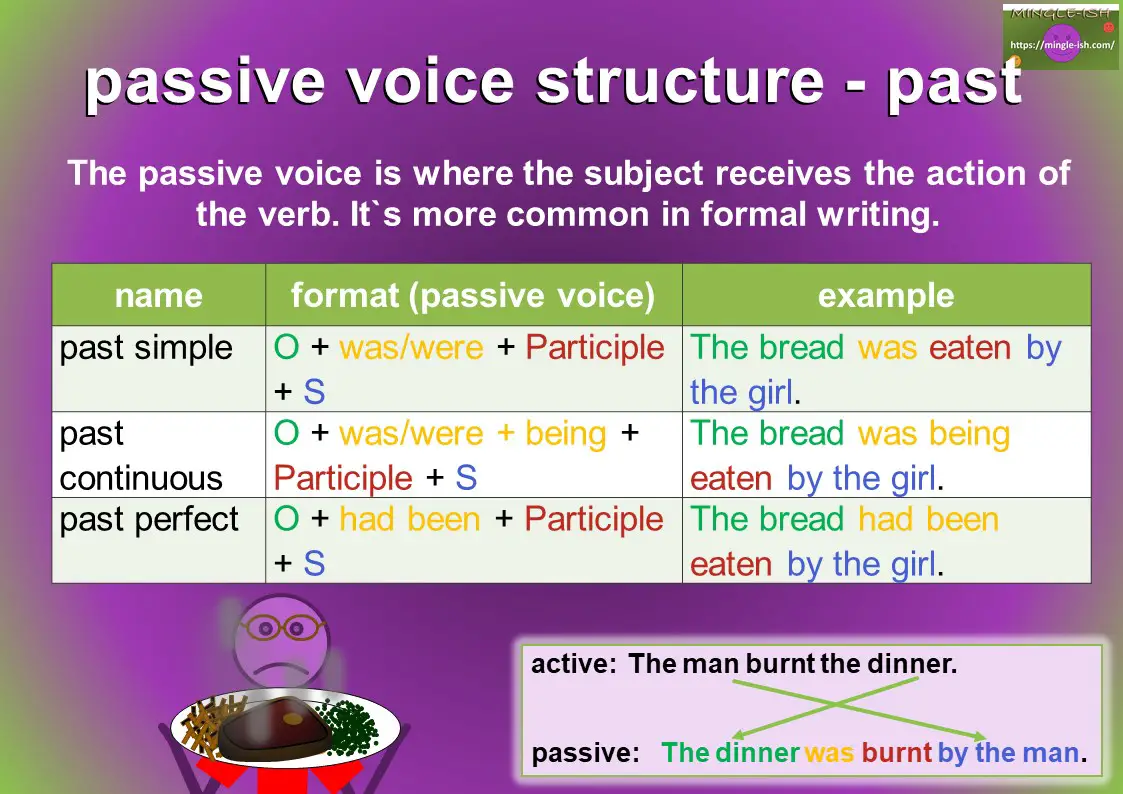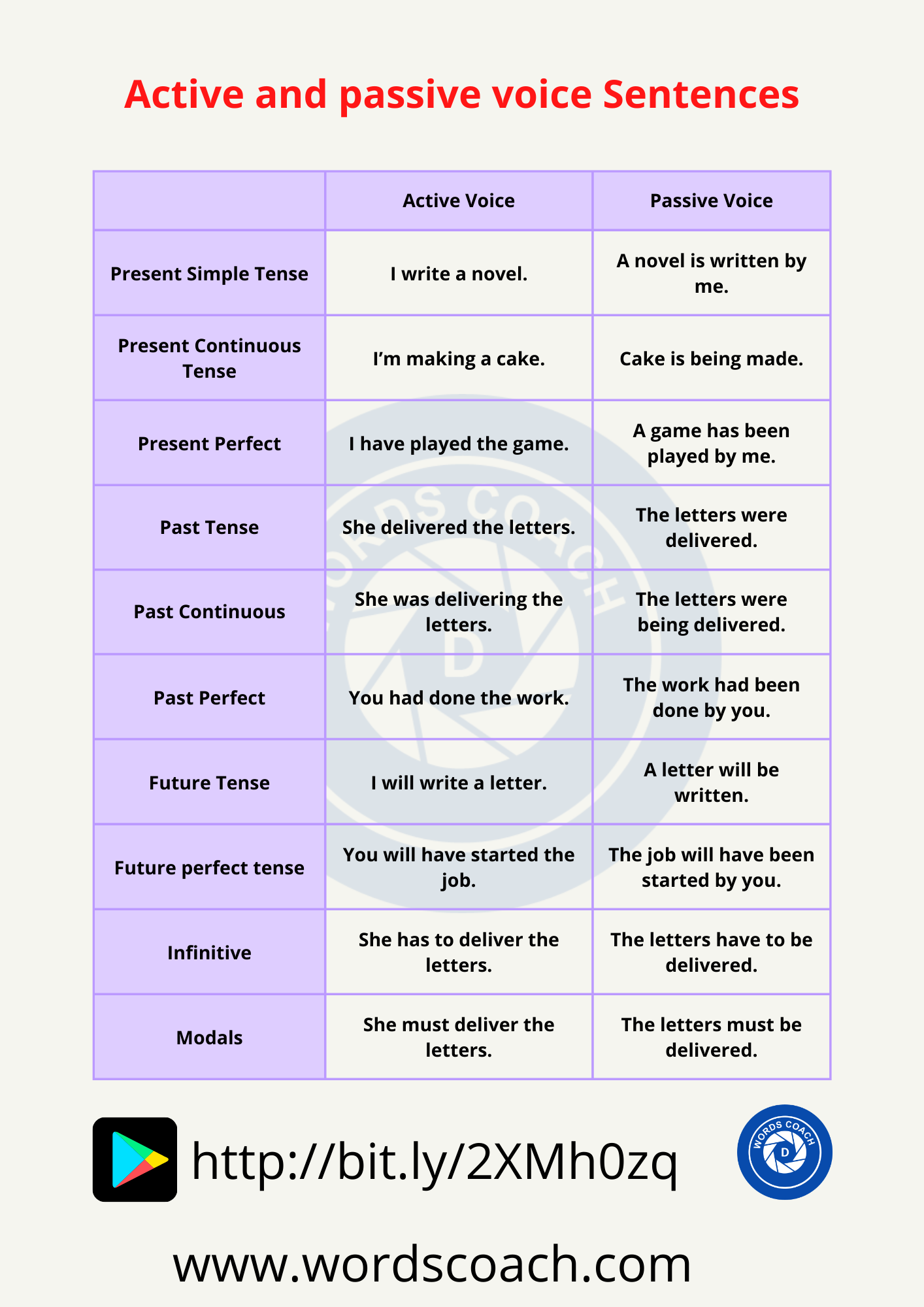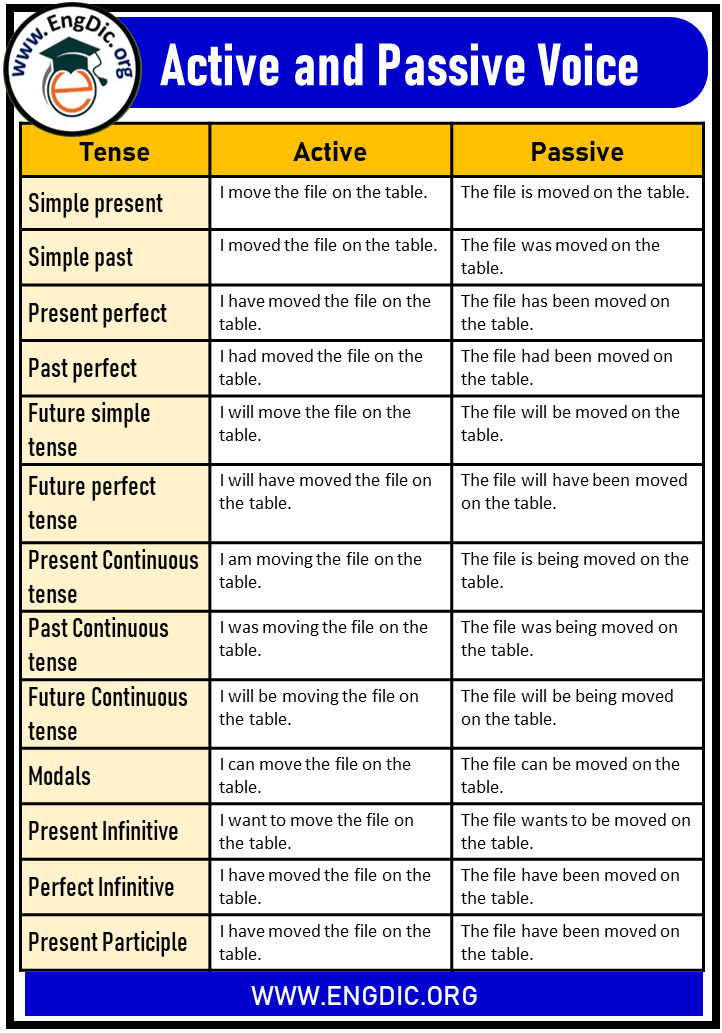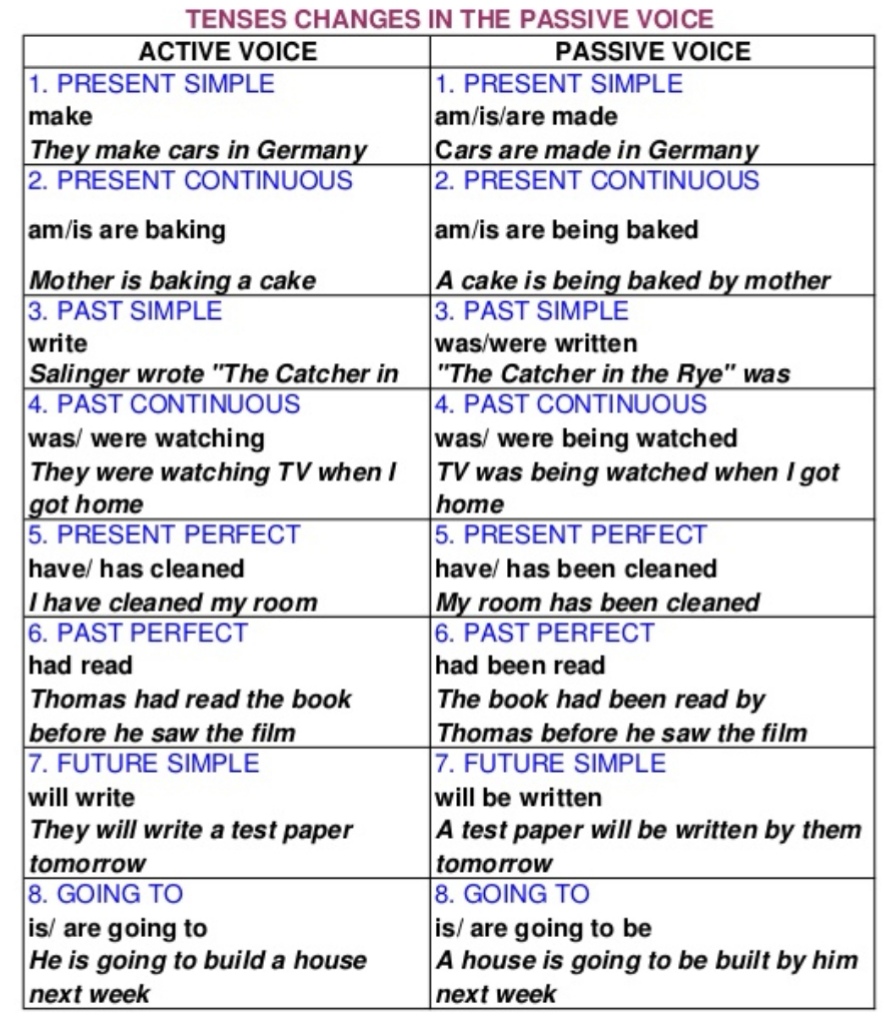
The Passive Voice Important Rules and Examples курсы 8 Английский язык, Изучать английский
Active and Passive Voice Sentence Structure In active voice, the actor and the action are clearly identified. In passive voice, you do not know who or what is doing the action. active voice: active voice: The truck tows the car. passive voice: The car is towed. active voice: Bob fixed the door. passive voice: The door was fixed.

Active and Passive Voice Examples AdrianteEllison
The active voice emphasizes the subject, or the thing performing the action. The passive voice, on the other hand, emphasizes the action or the recipient of the action. Schools typically teach students to avoid the passive voice whenever possible. This is because sentences in active voice tend to be stronger and more concise.

Active And Passive Voice With Tenses, Example Sentences B6B Tenses Chart, All Tenses, Verb
The past passive form follows this pattern: modal + have been + past participle Active: SHOULD HAVE / SHOULDN'T HAVE The students should have learned the verbs. The children shouldn't have broken the window. Passive: SHOULD HAVE / SHOULDN'T HAVE The verbs should have been learned by the students. The window shouldn't have been

Passive Voice Table In English фото в формате jpeg, самые лучшие фотографии интернета
English Grammar Verbs Active and passive voice Active and passive voice Level: beginner Transitive verbs have both active and passive forms: Passive forms are made up of the verb be with a past participle: If we want to show the person or thing doing the action, we use by: She was attacked by a dangerous dog. The money was stolen by her husband.

Structure Of Passive Voice In All Tenses Quiz IMAGESEE
In the simplest terms, an active voice sentence is written in the form of "A does B.". (For example, "Carmen sings the song.") A passive voice sentence is written in the form of "B is done by A.". (For example, "The song is sung by Carmen.") Both constructions are grammatically sound and correct. Let's look at a couple more.

Active and Passive Voice Examples with Answers English Study Here
There are times when passive voice is useful and called for. For example, "The squirrel was chased by the dog". The sentence construction would be helpful if the squirrel were the focus of our writing and not the dog. Structure of Active and Passive Voice . Active voice describes a sentence where the subject is the doer of an action.

online learning,education online,courses online,education online technology edu Teaching
Rule-3(active and passive voice rules) The rule of passive from the active voice of imperative sentence: Rules for converting active voice to passive voice, starting with the main verb only-Structure: Let+Object will be subject.+Be+ main verb will be past participle form. Examples are-Active: Do the work. Passive: Let the work be done.

Active Vs Passive Voice
Passive voice: Interviews are being taken for different posts (by them). Active voice: The police are interrogating him right now. Passive voice: He is being interrogated (by the police) right now. Active voice: Everyone is praising your work. Passive voice: Your work is being praised by everyone.

ACTIVE VOICE AND PASSIVE VOICE UG English
Active Voice: subject + verb + object. Passive Voice: object + to be + past participle verb + subject (optional) Interchanging the object and subject determines if a sentence is active or passive. Active Voice: The dog (subject) jumped over the fence (object). Passive Voice: The fence (object) was jumped over by the dog (subject).

learn about the active and passive voice in english here on Englishvid English Grammar Notes
The active voice, in a sentence, denotes that the noun or pronoun that acts as the subject in the sentence is the doer of the action. In other words, the subject performs the action or acts upon the verb.

Passive Voice Бесплатные распечатки, Образование, Английский
Here is a quick overview of the active and passive voice verb forms. Verb form: first form of the verb They speak English here. He speaks English. Verb form: is / am / are + past participle form of the verb English is spoken here. English is spoken by him. Present continuous tense Verb form: is/am/are + -ing form of the verb

Breanna Voice Structure Active And Passive Voice Formula Chart Images and Photos finder
Active and Passive Voice. Active voice and passive voice are grammatical constructions that communicate certain information about an action. Specifically, APA explains that voice shows relationships between the verb and the subject and/or object (see APA 7, Section 4.13). Writers need to be intentional about voice in order to ensure clarity.

50+ Sentences of active and passive voice Word Coach
Active and Passive voice is a particularly essential grammatical structure used in the English language. Understanding the rules governing their usage is crucial for effective communication.In this article, we will delve into the fundamentals of the active and passive voice. we will also explore the usage, rules, and conversion of Active and Passive voices.

Passive Chart
Active and passive are the two grammatical voices in English. Neither is inherently better than the other, but each is suited to certain types of writing. There's a reason why news anchors sound detached from the stories they're reporting: They often speak using the passive voice.

100 Examples of Active and Passive Voice (All Tenses) EngDic
An active construction is preferable for clarity and concision. The CEO made the decision to close the factory. If you write a passive sentence, consider carefully whether leading with the actor would strengthen your point. This is also relevant when discussing previous research: active constructions that specify who is responsible for findings.

Active And Passive Voice Rules Chart
An active construction is preferable for clarity and concision. The CEO made the decision to close the factory. If you write a passive sentence, consider carefully whether leading with the actor would strengthen your point. This is also relevant when discussing previous research: active constructions that specify who is responsible for findings.